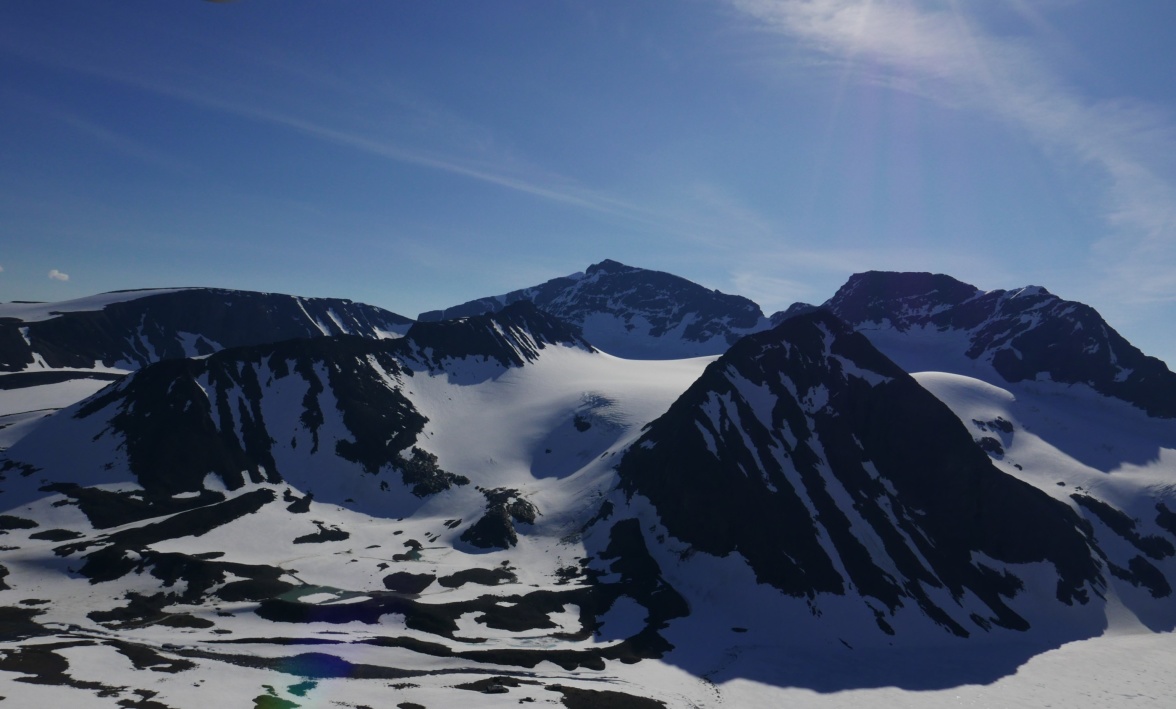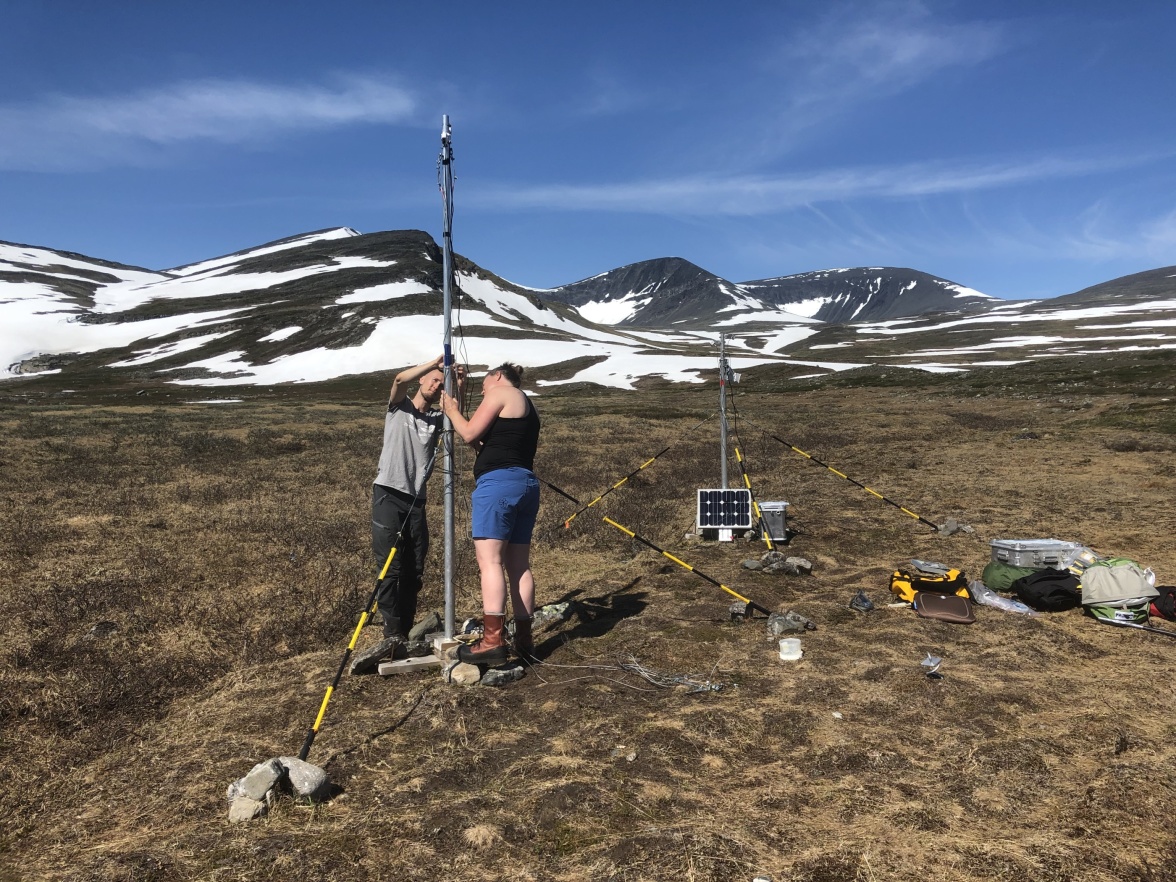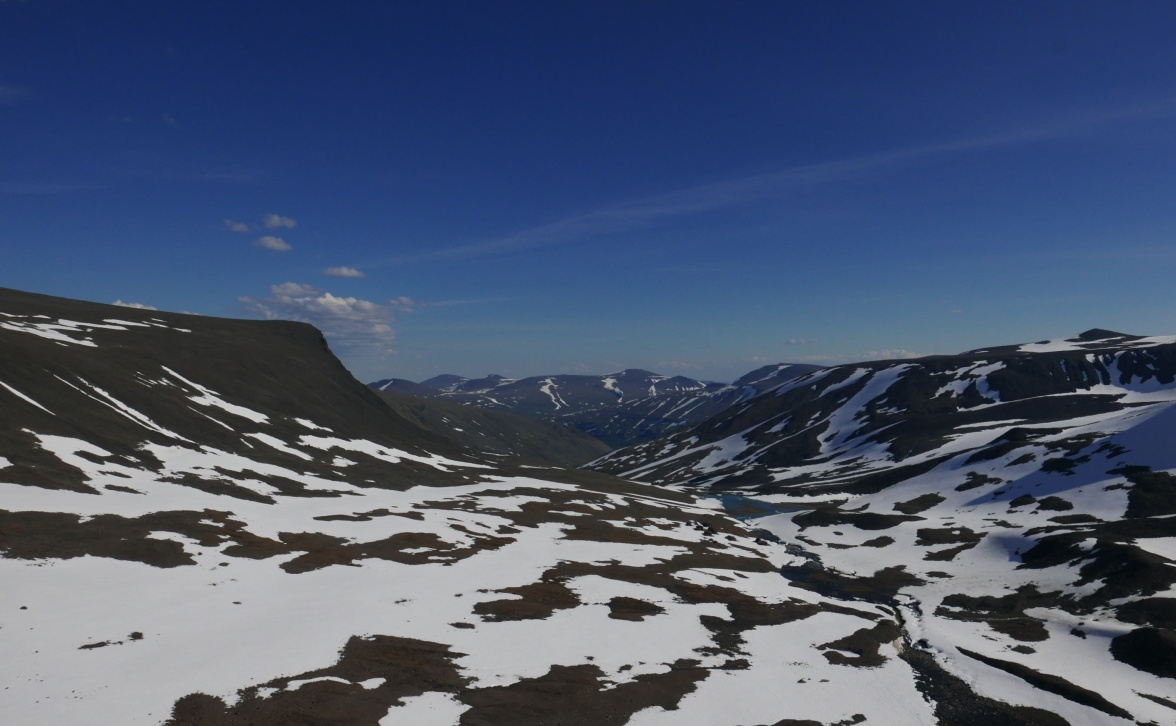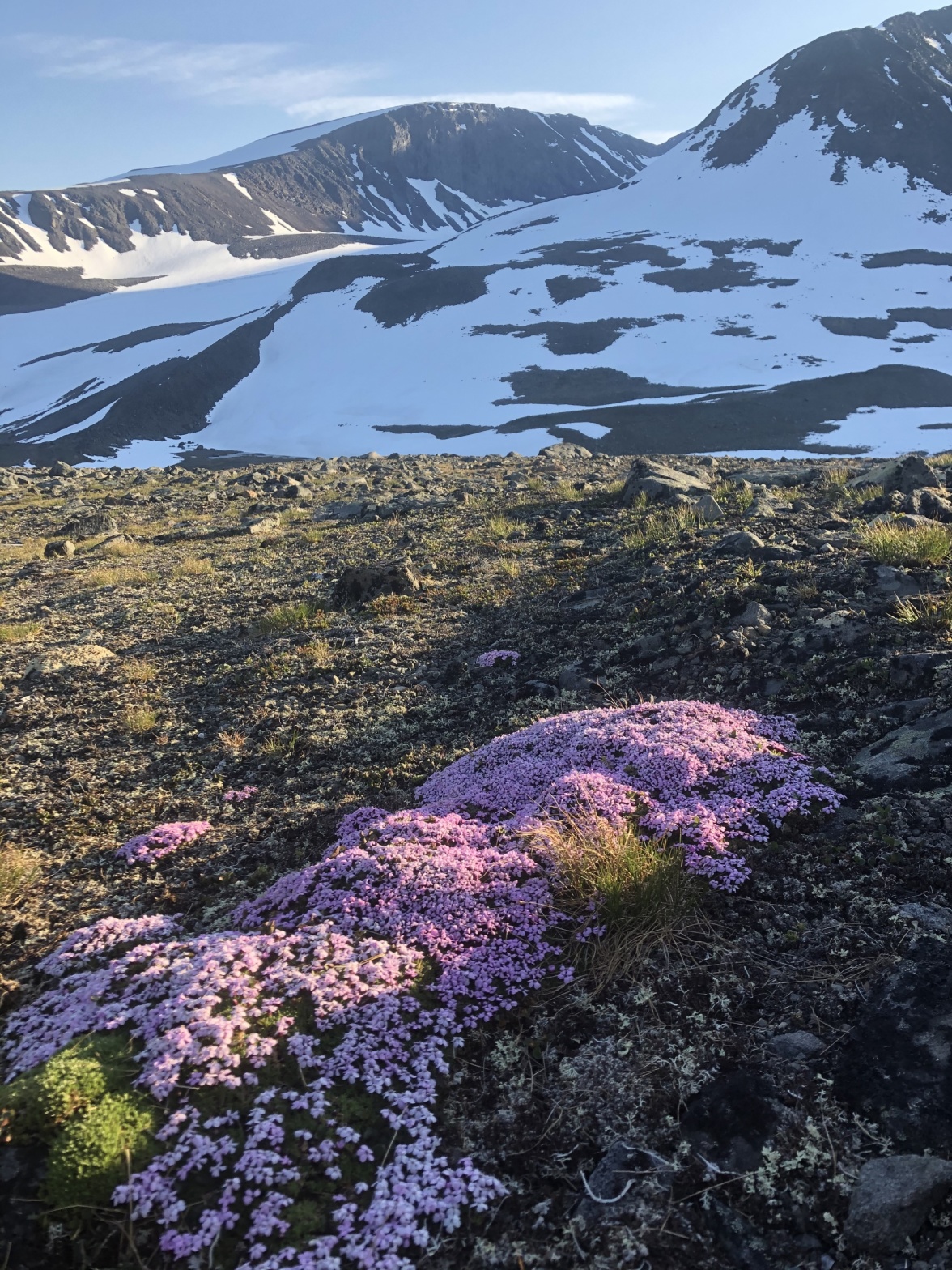The SITES team around Gunhild ‘Ninis’ Rosqvist and Pia Eriksson has successfully finished the recent monitoring campaign near the Kebnekaise massif at Tarfala Research Station.

View towards the Kebnekaise summits from a helicopter. Photographer: Gunhild Rosqvist.
During four weeks of field work, the group has been blessed with mostly sunny weather thanks to Freyr the Norse God of rain and sunshine - a great opportunity to maintain the long-term monitoring stations for SITES Spectral and SITES Water. As an example, the spectral masts have been maintained to continue the long-term monitoring of terrestrial primary production at Laevasvagge. An additional weather station at the location measures complementing meteorological parameters to monitor the local weather and climate and potential changes in the future.

SITES installations at Laevasvagge consisting of two spectral masts with an additional weather station in close vicinity. Photographer: Gunhild Rosqvist
The team further conducted several discharge campaigns aiming to cover the higher water levels during the spring flood to validate the stream water level monitoring in Tarfalajokk. The measurements of higher discharges from the snow melt are extremely valuable. When these points are added to the calculation of the water level-discharge function the rating curve will become more precise. The deviation of the high discharge points from the curve is larger than the points for medium and minimum events in descending order. More data points for the high discharge events increase the precision of the rating curve to calculate the runoff from the Tarfalajokk catchment area.
Usually, it is difficult to cover such high discharge events as the snow melt happens earlier in the season when the station is still closed. However, this year the team was lucky and valuable validation points could be added to the overall discharge equation.

View towards Tarfala Research Station and Tarfaladalen with Tarfalajokk running through it. Photographer: Gunhild Rosqvist
Not only the Tarfala SITES team, but also the vegetation in the Swedish mountains is in Freyr´s hands and the unpredictable and sometimes rough weather conditions. One example is the beautiful specimen of Silene acaulis (Swed. Fjällglim). The pink flower is a common resident in alpine and arctic zones and with its cushion forming habitus perfectly adapted to high UV radiation, strong winds and low temperatures. Silene acaulis is also called “compass plant” as the first flowers often appear on the South-oriented part of the cushion (Ref 1).
Ref 1: Link here.

Silene acaulis (Swed. Fjällglim) at the base of the Kebnekaise massif – a common and well-adapted species in the alpine landscape. Photographer: Gunhild Rosqvist.